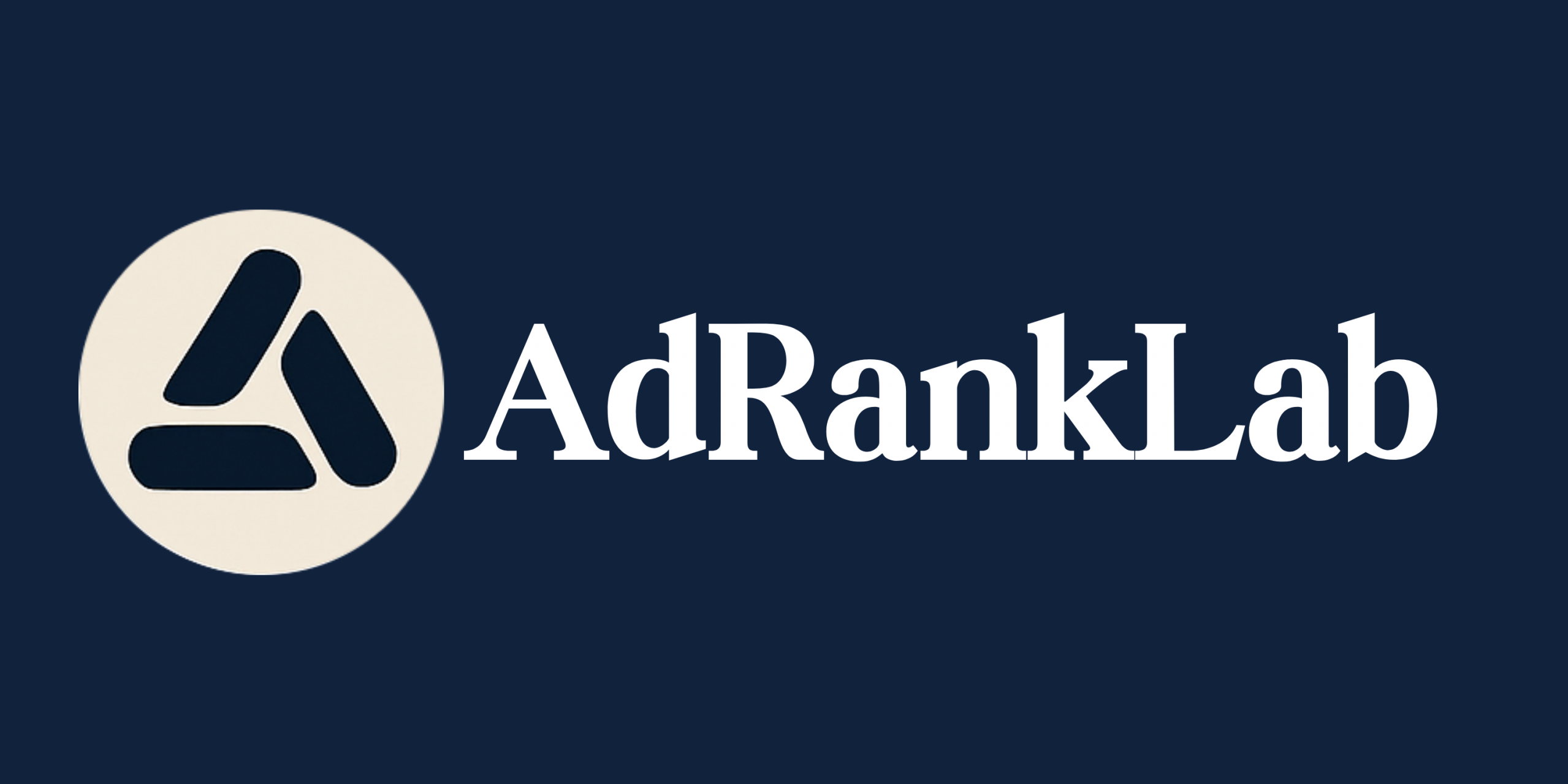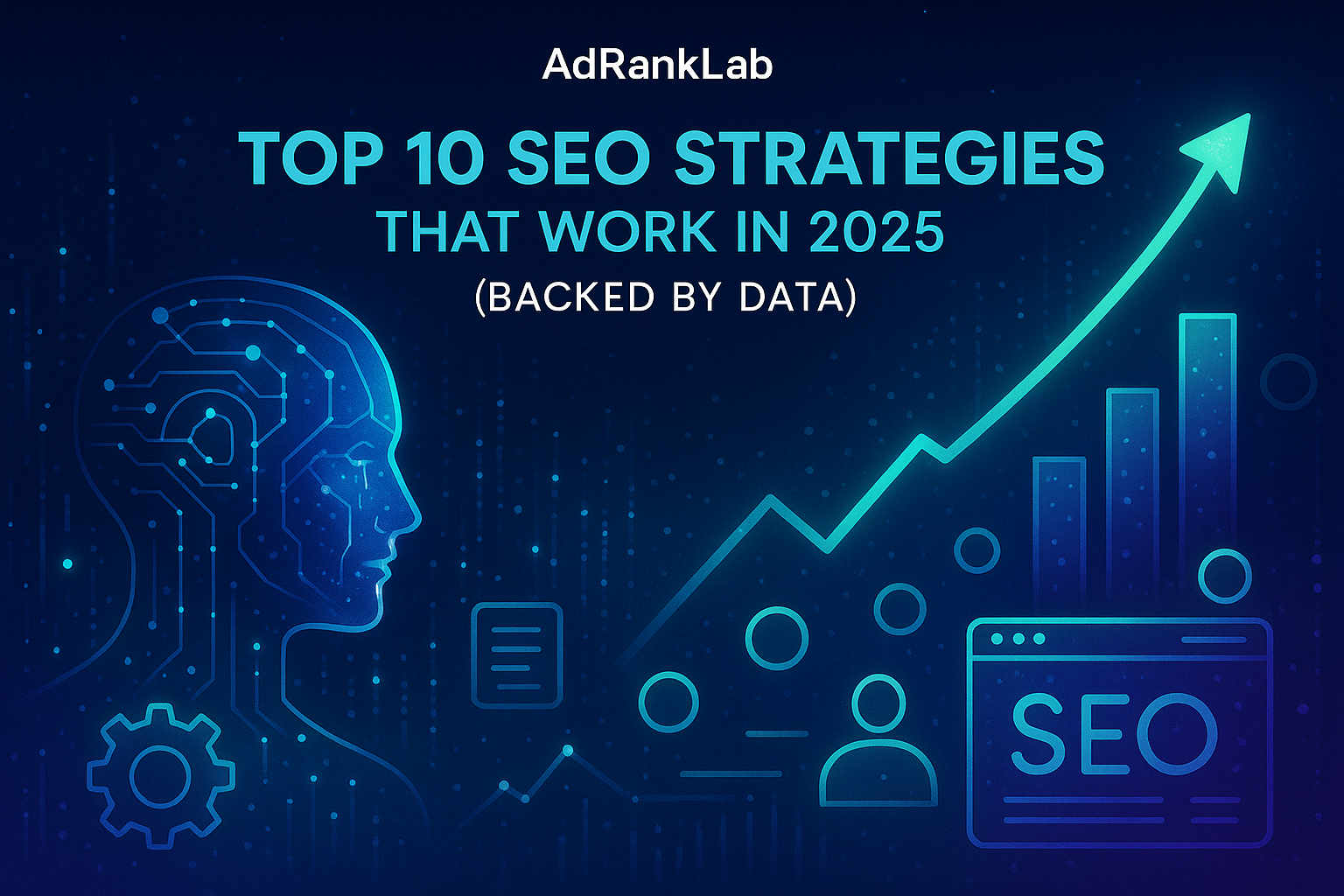In an era defined by rapid technological evolution and shifting consumer behaviors, a strategic digital marketing budget is not just a line item—it’s the backbone of growth. For corporate offices, startups, SaaS companies, and all businesses in the e-commerce and tech sectors worldwide, this comprehensive guide will walk you through every facet of budget planning for 2025. From emerging trends like AI and privacy to channel-by-channel allocations, ROI expectations, common pitfalls, and a practical case study, you’ll gain actionable insights to optimize your spend—and know exactly when to call in the experts at AdRankLab.
Why Budget Planning Matters in 2025
Digital Marketing Budget Breakdown
- Maximize ROI in a Competitive Landscape
- Fact: Companies that allocate at least 12% of annual revenue to marketing see an average revenue growth of 15–20% year-over-year.
- Figure: According to recent benchmarks, global businesses spend between 7–15% of revenue on marketing; tech-driven firms often push toward the higher end of that range to fuel rapid expansion.
- Navigate Economic Uncertainty
- Fact: With projections of a mild global GDP slowdown (~2.5% in 2025 vs. 3.1% in 2024), efficient budget planning shields you from external shocks.
- Figure: Businesses that cut digital marketing budgets by more than 20% during downturns risk losing up to 40% of market share to more aggressive competitors.
- Align Spend with Strategic Goals
- Fact: A clearly mapped budget ensures alignment across stakeholders—from C-suite to operations.
- Figure: Organizations with documented marketing budgets achieve their quarterly goals 30% faster and with 25% fewer revisions than those operating ad hoc.
Trends Influencing Budget Decisions
Artificial Intelligence and Automation
- Ad Spend Growth: AI-powered programmatic advertising is forecast to reach $150 billion globally in 2025 (up 25% YoY).
- Efficiency Gains: Marketers leveraging AI for bid optimization report 20–30% lower cost-per-click (CPC).
Privacy and Data Regulations
- Consumer Trust: 68% of consumers demand transparency in data usage—noncompliance can cost up to €20 million per violation under GDPR-like regulations.
- First-Party Data Investment: Companies plan to increase first-party data spend by 40%, shifting away from cookie-based targeting.
Omnichannel Customer Journeys
- Channel Integration: Brands that coordinate across 5+ channels see 90% higher customer retention.
- Budgets Rebalanced: 35% of marketers will reallocate funds from single-channel to integrated campaigns in 2025.
Content Personalization and Interactive Media
- Engagement Uplift: Personalized content can boost conversion rates by 50%.
- Interactive Formats: Investment in interactive formats (quizzes, calculators, AR experiences) will grow by 45% in 2025.
Suggested Budget Allocation by Channel
Below is a benchmark breakdown for a $1 million annual digital marketing budget. Adjust percentages to fit your revenue, growth stage, and industry nuances.
| Channel | % of Total Budget | $ Allocation | Key Metrics |
|---|---|---|---|
| Search Engine Optimization (SEO) | 25% | $250,000 | Organic traffic growth, keyword rankings, domain authority |
| Pay-Per-Click (PPC) | 30% | $300,000 | CPC, click-through rate (CTR), cost per acquisition (CPA) |
| Social Media Marketing (SMM) | 20% | $200,000 | Engagement rate, follower growth, social ROI |
| Content Marketing | 15% | $150,000 | Content downloads, time-on-page, lead generation |
| Email Marketing | 10% | $100,000 | Open rate, click-to-conversion, list growth |
Fact: High-growth SaaS companies typically invest 18–22% of their budget in SEO, reflecting the long-term ROI potential of organic channels.
Figure: E-commerce leaders allocate 28–35% to PPC, capitalizing on immediate sales opportunities.
SEO (25%)
- Key Activities: Technical audits, on-page optimization, authoritative link building, local/global SEO.
- Fact: Each 1-position climb on Page 1 can boost click-through rate by 30% on average.
PPC (30%)
- Key Platforms: Google Ads, Microsoft Advertising, LinkedIn Ads (B2B focus).
- Fact: Well-optimized Google Search campaigns yield an average 2.5x return on ad spend (ROAS).
Social Media Marketing (20%)
- Key Platforms: LinkedIn, Twitter/X, Facebook, Instagram, TikTok for B2C.
- Figure: Brands using paid social see 23% better engagement compared to organic-only approaches.
Content Marketing (15%)
- Formats: Whitepapers, e-books, webinars, infographics, video.
- Fact: Content marketing generates 3x as many leads as traditional outbound tactics, with 62% lower cost per lead.
Email Marketing (10%)
- Tactics: Segmentation, drip campaigns, re-engagement flows, transactional emails.
- Figure: Every $1 spent on email marketing returns $42 in revenue on average.
Cost vs. ROI Expectations
Understanding the interplay between investment and return is crucial:
| Channel | Avg. Cost Range (per month) | Expected ROI (Annualized) |
|---|---|---|
| SEO | $10,000–$30,000 | 200–400% |
| PPC | $15,000–$50,000 | 150–300% |
| SMM | $8,000–$25,000 | 100–250% |
| Content | $5,000–$20,000 | 250–500% |
| $2,500–$10,000 | 300–600% |
- Cost Drivers: Agency fees, software tools, creative production, ad spend.
- ROI Levers: A/B testing, audience targeting, funnel optimization, lifecycle marketing.
Mistakes to Avoid While Planning
- Over-Allocating to Unproven Channels
- Pitfall: Jumping on every new platform without historical data.
- Avoid: Start with a pilot (5–10% of budget), measure, then scale or pivot.
- Ignoring Attribution Complexity
- Pitfall: Single-touch attribution underestimates upper-funnel channels like SEO and content.
- Avoid: Implement multi-touch attribution to understand true channel performance.
- Underfunding Testing and Experimentation
- Pitfall: Allocating 100% to “safe bets” leaves no room for growth hacks.
- Avoid: Reserve 10–15% of budget for experimental campaigns.
- Neglecting Ongoing Optimization
- Pitfall: “Set-and-forget” campaigns lead to budget waste.
- Avoid: Establish weekly or bi-weekly reviews, optimize bids, creatives, and landing pages.
- Failing to Account for Seasonality
- Pitfall: Flat budgeting overlooks peak and off-season fluctuations.
- Avoid: Adjust monthly allocations ±20% based on historical sales cycles.
Case Study: Sample Budget Table
Below is a quarterly breakdown for an e-commerce startup targeting global markets, with a $500,000 annual digital marketing budget.
| Quarter | SEO (25%) | PPC (30%) | SMM (20%) | Content (15%) | Email (10%) | Total Spend |
|---|---|---|---|---|---|---|
| Q1 | $31,250 | $37,500 | $25,000 | $18,750 | $12,500 | $125,000 |
| Q2 | $31,250 | $37,500 | $25,000 | $18,750 | $12,500 | $125,000 |
| Q3 | $31,250 | $37,500 | $25,000 | $18,750 | $12,500 | $125,000 |
| Q4 | $31,250 | $37,500 | $25,000 | $18,750 | $12,500 | $125,000 |
| Total | $125,000 | $150,000 | $100,000 | $75,000 | $50,000 | $500,000 |
Figure: In Q3, the startup increased PPC spend by 10% (+$3,750) to capture holiday demand, resulting in a 40% uplift in conversions with only a 15% increase in CPA.
When to Outsource to an Agency like AdRankLab
While in-house marketing offers control, outsourcing can deliver:
| Scenario | Agency Advantage |
|---|---|
| Limited Bandwidth or Expertise | Access to certified specialists in SEO, PPC, social, and more |
| Need for Speedy Execution | Dedicated teams able to launch campaigns within weeks |
| Desire for Cutting-Edge Tools | Agencies invest in enterprise platforms (e.g., Adobe, HubSpot) |
| Scaling Globally in New Markets | Regional insights and localized strategies |
| Budget Optimization & Reporting | Advanced attribution models and real-time dashboards |
- Fact: Businesses partnering with specialized agencies report a 25% reduction in wasted ad spend within the first six months.
- Figure: AdRankLab clients see an average 3x ROAS within the first year of engagement.
Conclusion
Crafting an optimized digital marketing budget for 2025 demands a blend of data-driven planning, trend awareness, and strategic agility. By allocating across SEO, PPC, Social, Content, and Email—while reserving room for experimentation and optimization—you position your organization for sustained growth. And when in doubt, partnering with experts like AdRankLab ensures you’re tapping the latest technologies, compliance frameworks, and performance analytics to make every dollar count.
Ready to elevate your global digital marketing strategy? Contact AdRankLab today and let’s shape your 2025 success story together.



